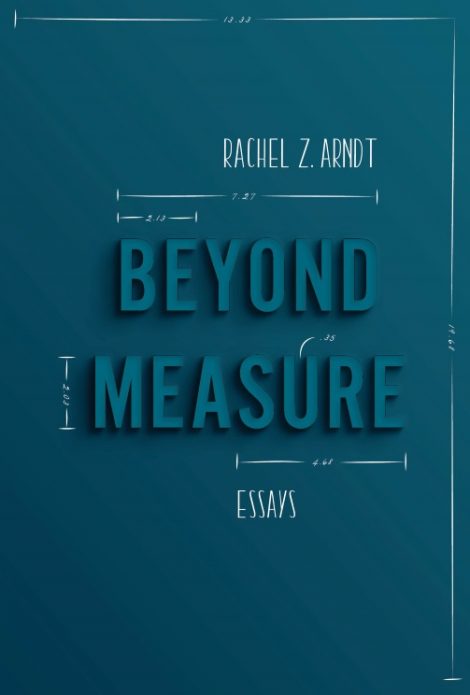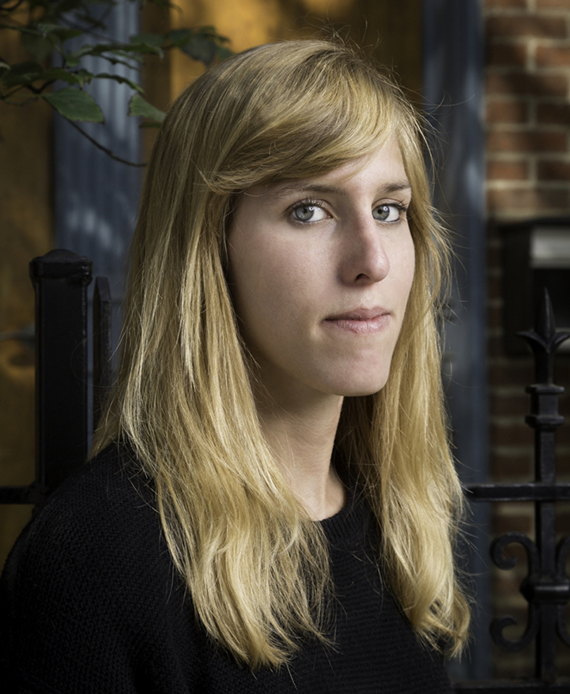
BEYOND MEASURE
Essays
With mordant humor and penetrating intellect, Rachel Z. Arndt casts her gaze beyond event-driven narratives to the machinery underlying them: judo competitions measured in weigh-ins and wait times; the significance of the elliptical’s stationary churn; the standardized height of kitchen countertops; the rote scripts of dating apps; the stupefying sameness of the daily commute. “How much can data tell us?” Arndt asks, challenging us to consider the simultaneous comfort and absurdity of our exhaustively quantified—yet never entirely quantifiable—lives.
With mordant humor and penetrating intellect, Rachel Z. Arndt casts her gaze beyond event-driven narratives to the machinery underlying them: judo competitions measured in weigh-ins and wait times; the significance of the elliptical’s stationary churn; the standardized height of kitchen countertops; the rote scripts of dating apps; the stupefying sameness of the daily commute. “How much can data tell us?” Arndt asks, challenging us to consider the simultaneous comfort and absurdity of our exhaustively quantified—yet never entirely quantifiable—lives.
- Sarabande Books
- Paperback
- April 2018
- 160 Pages
- 9781946448132
About Rachel Z. Arndt
 Rachel Z. Arndt’s writing has appeared in Popular Mechanics, Quartz, The Believer, and elsewhere. She received MFAs in nonfiction and poetry from the University of Iowa, where she was an Iowa Arts Fellow and nonfiction editor of The Iowa Review. After stints in Rhode Island and New York, she now lives in Chicago, and works as a reporter at Modern Healthcare, covering healthcare technology.
Rachel Z. Arndt’s writing has appeared in Popular Mechanics, Quartz, The Believer, and elsewhere. She received MFAs in nonfiction and poetry from the University of Iowa, where she was an Iowa Arts Fellow and nonfiction editor of The Iowa Review. After stints in Rhode Island and New York, she now lives in Chicago, and works as a reporter at Modern Healthcare, covering healthcare technology.
Praise
“Great Essay Collections from Winter/Spring 2018,” Book Riot
“Best New Books of April 2018,” Chicago Review of Books
“Debut Author Spotlight,” The Masters Review
“[Beyond Measure] is a delight to read.”—Publishers Weekly
“[H]er strongest pieces place her at the center of larger forces that make her (and us) feel abnormal. . . . A keen, close study of the neuroses attached to everyday living.”—Kirkus Reviews
“Arndt is a thoughtful, deliberate writer—one might say measured—infusing her prose with wit and flashes of poetic insight. . . . And Beyond Measure is an elegantly structured book, its flow and recurring motifs reminiscent of Leslie Jamison’s The Empathy Exams.”—The Masters Review
Discussion Questions
1. What do you see as the theme that ties all these essays together? Which essays are most representative of this theme?
2. Each of the essays has a one-word title. How do these titles affect how you read the essays?
3. The idea of uncertainty comes up a lot. What is Arndt suggesting about the role uncertainty plays in modern life?
4. In “Early,” Arndt juxtaposes the story of her birth with anecdotes from adulthood. What effects do the two threads have on one another? By juxtaposing different times in her life, what argument is Arndt making?
5. Some of the essays, like “Yardstick,” incorporate researched information. How do those more objective facts interact with the personal and subjective narration? Do the two modes complement one another? Contradict one another?
6. Could these essays work without a first-person narrator? How would they change?
7. In “Stars,” Arndt brings up the etiquette of rating and measuring things. Throughout the book, when and how does the narrator act differently because measurement is involved? When do you find yourself doing the same?
8. “Naps” has a distinct, fragmented, and repetitive style. What is the effect of this style on that essay? What’s the effect on the surrounding essays?
9. The book starts and ends with essays about sleep. What role does sleep play in the book?
10. In “Yardstick,” “Weight,” and other essays, Arndt considers the way women are measured by society. How are these essays related to the #MeToo movement? If they were written now, after the movement began, how might they change?
11. Digital technology plays an important role in some of the essays, allowing the narrator to measure what would otherwise be unquantifiable. What would these essays look like if they were written one hundred years ago?
